Aldo Rosales Nolasco
Aldo Rosales Nolasco is a Research Associate with CIMMYT’s Global Maize Program, based in Mexico.
The CGIAR Research Program on Maize (MAIZE) is an international collaboration between more than 300 partners that seeks to mobilize global resources in maize research and development to achieve a greater strategic impact on maize-based farming systems in Africa, Latin America and South Asia.
Led by the International Maize and Wheat Improvement Center (CIMMYT), with the International Institute of Tropical Agriculture (IITA) as its main CGIAR partner, MAIZE focuses on increasing maize production for the 900 million poor consumers for whom maize is a staple food in Africa, Latin America and South Asia. MAIZE’s overarching goal is to double maize productivity and increase incomes and livelihood opportunities from sustainable maize-based farming systems.
MAIZE receives funding support from CGIAR Trust Fund contributors.
MAIZE Flagship Projects (FPs) and Cluster of Activities
FP1: Enhancing MAIZE’s R4D strategy for impact
• Foresight and targeting of R4D strategies
• Learning from M&E, adoption and impacts
• Enhancing gender and social inclusiveness
• Value chain analysis
FP2: Novel diversity and tools for improving genetic gains
• Informatics, database management and decision support tools
• Development of enabling tools for germplasm improvement
• Unlocking genetic diversity through trait exploration and gene discovery
• Pre-breeding: development of germplasm resources
FP3: Stress-tolerant and nutritious maize
• Climate resilient maize with abiotic and biotic stress tolerance
• Tackling emerging trans-boundary disease/pest challenges
• Nutritional quality and end-use traits in elite genetic backgrounds
• Precision phenotyping and mechanization of breeding operations
• Seed production research and recommendations
• Stronger maize seed systems
FP4: Sustainable intensification of maize-based systems
• Multi-scale farming system framework to better integrate and enhance adoption of sustainable intensification options
• Participatory adoption and integration of technological components
• Development and field-testing of crop management technologies
• Partnership and collaborations models for scaling
Aldo Rosales Nolasco is a Research Associate with CIMMYT’s Global Maize Program, based in Mexico.
Evelot Nyamutowa is a Research Associate with CIMMYT’s Global Maize Program, based in Zimbabwe.
Boniface Nyamande is a Field Auxilary with CIMMYT’s Global Maize Program, based in Zimbabwe.
David Ngure is a Research Associate with CIMMYT’s Global Maize Program, based in Kenya.
Patience Ndaruza is a Field Auxilary with CIMMYT’s Global Maize Program, based in Zimbabwe.
Melody Mutengezanwa is an Administrative Assistant with CIMMYT’s Global Maize Program, based in Zimbabwe.
Carlos Muñoz Zavala is an Assistant Research Associate with CIMMYT’s Global Maize Program, based in Mexico.
Gabriel Migwi is a Research Technician with CIMMYT’s Global Maize Program, based in Kenya.
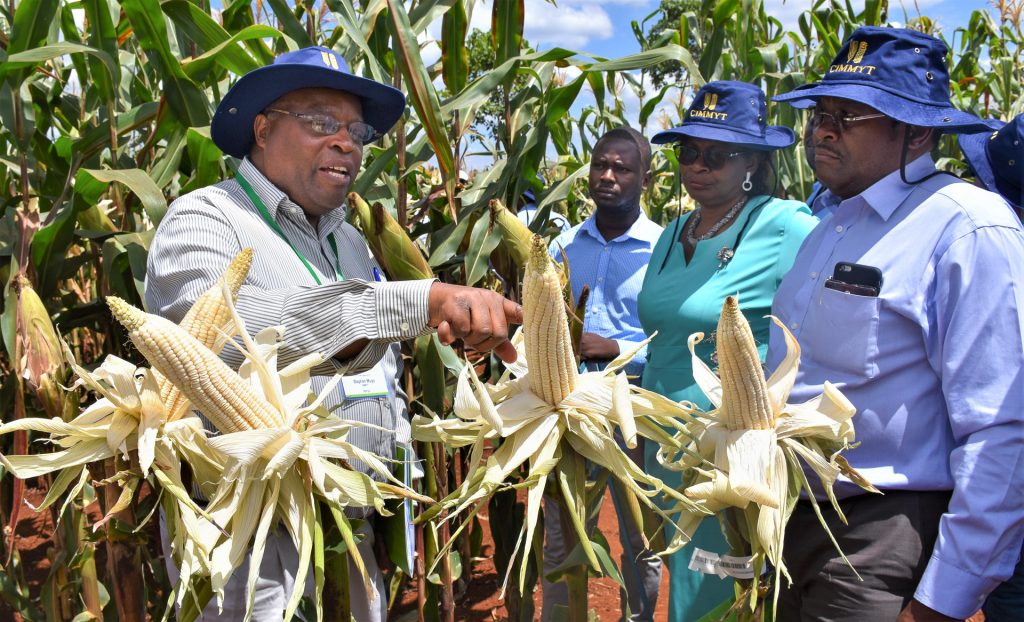
After a long and distinguished service as a maize breeder and senior manager at the International Maize and Wheat Improvement Center (CIMMYT), Stephen Mugo has retired from the organization. A Principal Scientist and Maize Breeder at CIMMYT’s Global Maize Program, Mugo also served as CIMMYT’s Country Representative for Kenya and CIMMYT’s Regional Representative for Africa.
He joined CIMMYT in 1998 as a post-doctoral fellow and his last day of work was on May 31, 2020. His colleagues honored him with memorable tributes at an online meeting held on May 21, 2020.
“Mugo has always demonstrated his commitment and determination, even in the most challenging times, for the benefit of CIMMYT and its staff. He has been a very productive scientist, maize breeder and project leader of several projects that have had great impact in the past. We are proud of what he has been doing and still does for CIMMYT,” said Director General Martin Kropff.
In his illustrious career, Mugo led the Stress Tolerant Maize for Africa Supplement Project (STMA-SUP) and the TELA Maize Project, both of which aimed at improving maize for drought tolerance and insect pest resistance in five countries in eastern and southern Africa. He was also the CIMMYT leader for the Water Efficient Maize for Africa (WEMA) project (2008-2018), Insect Resistant Maize for Africa (IRMA) project (1999-2004) and the Strengthening Seed Systems project in Kenya and Uganda (2001-2003).
“I leave CIMMYT with fond memories and with my head held high. I sincerely wish to thank my colleagues for being a wonderful team that continues to work hard to ensure that we get the right seed to the farmer,” Mugo said. “I have enjoyed every bit of my time at the organization. What I would request is that for us to continue working well together, we need to respect and treat one another the way you would like to be treated. This way, the organization would move from strength to strength,” he expressed.
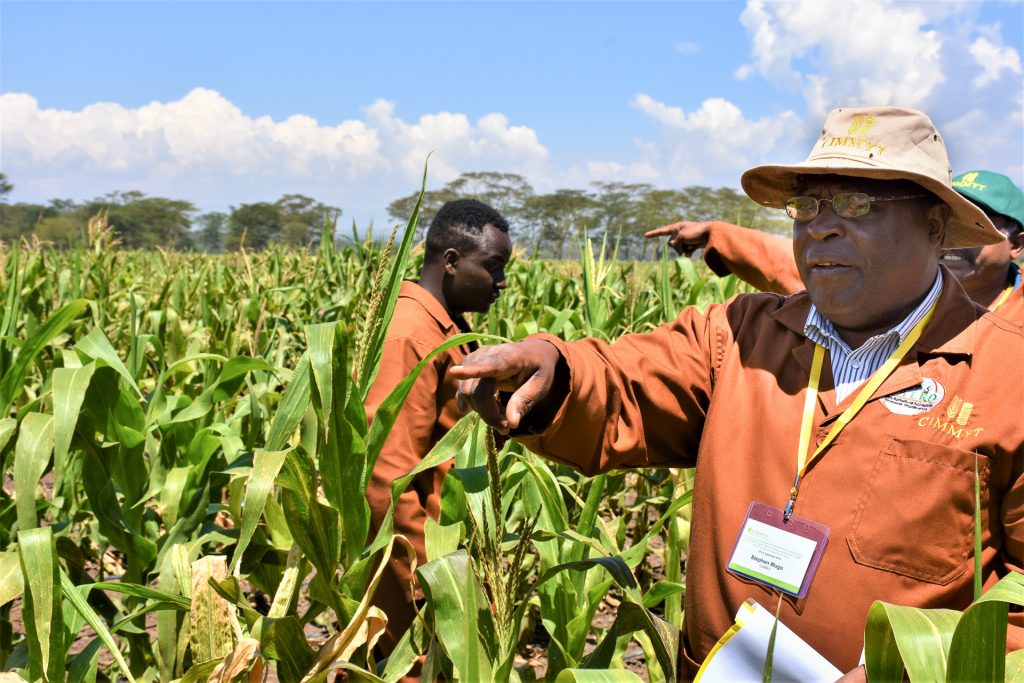
Mugo holds a PhD in Plant Breeding and Genetics from Cornell University and has published extensively in peer reviewed journals, with several book chapters to his name.
B.M. Prasanna, Director of the Global Maize Program at CIMMYT and the CGIAR Research Program on Maize (MAIZE) acknowledged the tremendous contribution that Mugo has made over the years in the projects he led.
“His work on the Insect Resistant Maize for Africa (IRMA) project has been phenomenally important, especially some of the germplasm that we are now finding as native genetic resistant to the fall armyworm,” Prasanna remarked. “He is a great champion and tremendous ambassador for CIMMYT’s work in Africa. I am sure he will continue to contribute to CIMMYT for years to come.”
Even though he leaves the stage, Mugo will provide consultancy support to CIMMYT, particularly on the MLN Gene Editing and TELA Maize projects.
The COVID-19 pandemic continues to transform the way the world operates, and agricultural production systems are not exempt.
Even in countries that have identified the agricultural sector as an essential one, ongoing restrictions on transport and freedom of movement are causing disruptions across the value chain — with potentially devastating impact on already fragile food systems in Latin America, sub-Saharan Africa and South Asia.
With this in mind, systems agronomists and mechanization specialists at the International Maize and Wheat Improvement Center (CIMMYT), discuss the impact of restrictions on agricultural labor and production, and the role farm mechanization can play in addressing new challenges.
What are the implications of the agricultural labor shortages that are emerging in Africa and Latin America as a result of COVID-19 restrictions?

Frédéric Baudron: The pandemic has demonstrated that food production systems around the world — even in countries where agriculture is thought to be highly mechanized — are highly dependent on farm labor.
Africa is often presented as being dominated by farms which rely mainly on the labor of family members. Therefore, one could expect that Africa would be spared from the consequences of unavailability and/or unaffordability of hired labor. However, a recent CIMMYT study shows that farming systems in Africa are far more dependent on hired labor than commonly thought, and that the quasi total dependence of smallholder farming on family labor is a myth. Depending on the farming system, a complete loss of hired labor could lead to a productivity decrease of up to 20% in Eastern and Southern Africa. Hired labor is also likely to be replaced by child labor.
Because most production on the continent is rainfed during a single season, most farmers only plant and harvest once per year, making the timing of each task critical. A delay in planting because of labor shortages — as will soon occur Ethiopia — could lead to dramatically reduced yields. A delay in harvesting — as is currently experienced in Zimbabwe — means a large fraction of the crop is likely to be spoilt in the field.
Jelle Van Loon: The situation is similar for Mexico and the general Central American corridor, although the main production cycle is only just starting. Proper land preparation and timely sowing are critical, not only in terms of food production and achieving proper yields, but also to ensure that farmers have a stable income at the end of the year. This is especially important now, as financial and food reserves are shrinking at a faster pace due to COVID-19 restrictions that heavily affect demand on informal markets.
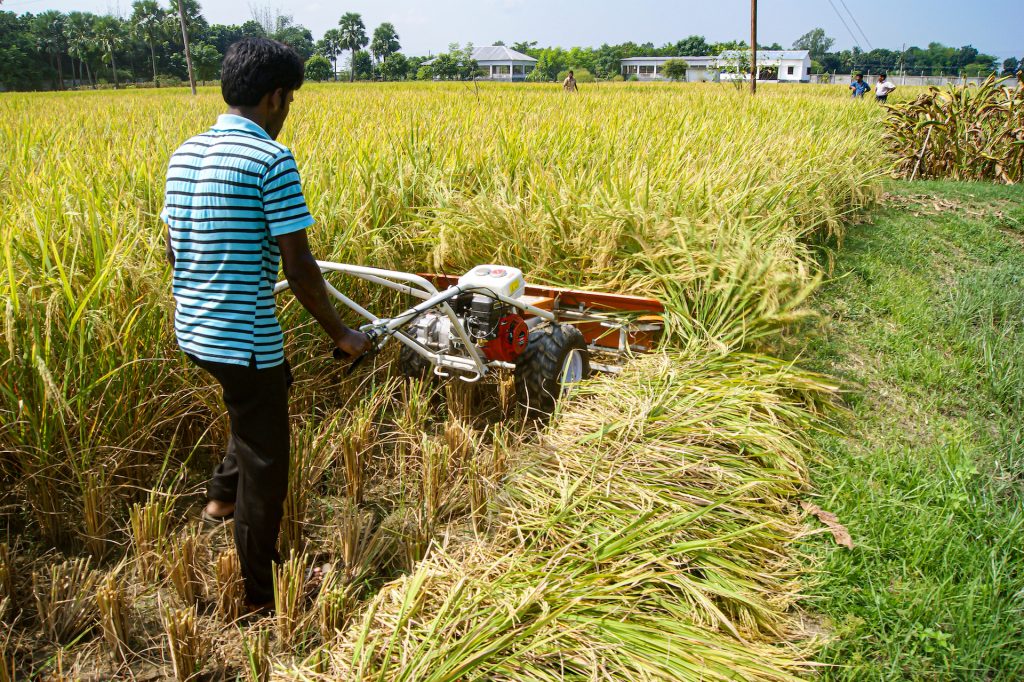
Are you seeing a similar situation in South Asia?
Timothy Krupnik: Depending on the country, we’ve seen either abrupt interruptions in the movement of agricultural laborers — for example in India where millions of migrant laborers have not been able to travel home during lockdown — or an influx of people from urban areas who fled to their villages when lockdown began.
In the latter case, one might expect this to increase labor availability for farming, but we tended to observe the reverse. People remain largely frightened of coming out of their homes, so even in rural areas which saw an influx of people, labor availability has not necessarily increased. Where laborers are willing to work, our initial scan of the evidence indicates that daily wage labor costs have also increased considerably due to risks of infection spreading. In either situation, smallholder farmers who need to hire labor to assure crucial crop management activities like planting or harvesting are suffering. There are reports emerging also of increased child labor in the region as schools are closed and resource-poor farmers are allocating family members and children to work where they can’t afford to hire labor.
M.L. Jat: I would like to cite the specific example of intensive rice-wheat rotation in India’s breadbasket and the Green Revolution corridors in the western Indo-Gangetic plains, which provide the bulk of cereals to the national food basket. An ex-ante analysis on the consequences of the reverse migration of the agricultural workforce and social distancing due to COVID-19 revealed that a delay in the transplanting of rice seedlings by two weeks is likely, which will delay rice harvesting and consequently delay the planting of wheat. This will potentially lead to rice and wheat production losses of 10-25%, worth up to $1.5 billion.
In addition, the shorter turn around between harvesting rice and planting wheat may further increase the incidence of rice residue burning. This is a major problem which creates significant health issues and may exacerbate the threat of COVID-19 by increasing both infection rates and disease severity.
Krupnik: The situation has increased interest and policy to support use of scale-appropriate machinery for operations like harvesting. In Bangladesh, for example, there was a recent and very serious risk of losing much of the rice harvest as the monsoon has started early and flash flooding has been a concern. Without manual laborers to harvest the crop, CIMMYT-led projects like the Cereal Systems Initiative for South Asia – Mechanization and Extension Activity (CSISA-MEA) have played a key role in assisting the movement of combine harvesters and crop reapers to areas at risk of crop losses and helping to assure the rice crop is harvested on time.
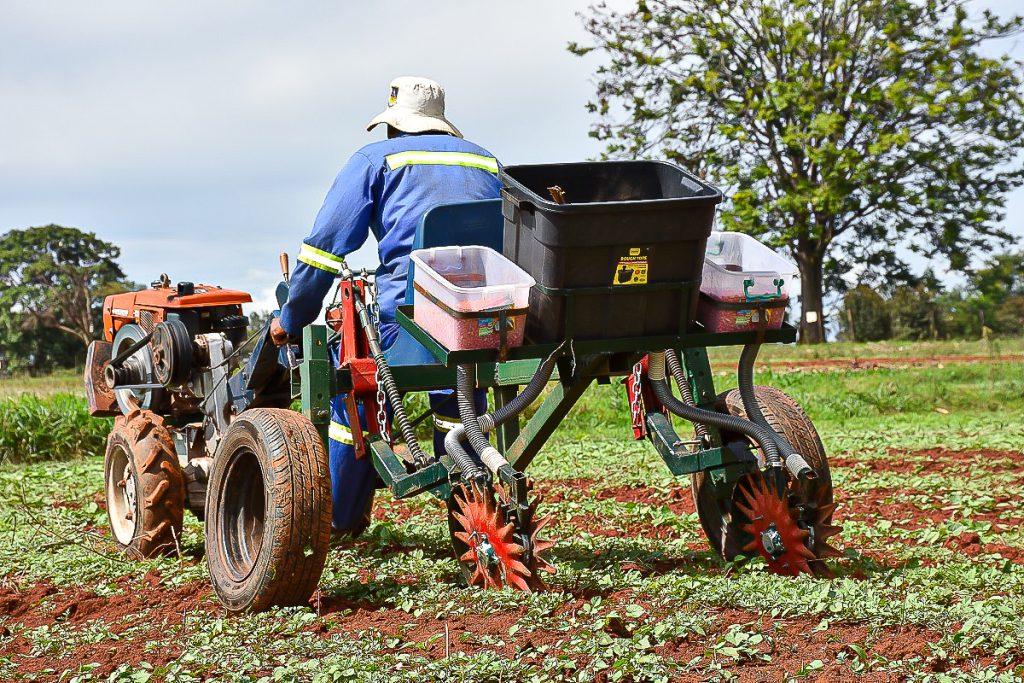
It sounds like these machines were instrumental in avoiding crop losses. Does this mean that mechanization has a key role to play in lessening the impact of these labor shortages?
Krupnik: During the COVID-19 crisis, scale-appropriate machinery has become even more important for mitigating labor shortages. We work to facilitate the availability of scale-appropriate machinery not only so that farmers can buy and use equipment, but also by encouraging those who own machineries to become entrepreneurial service providers who offer efficient and mechanized land preparation, planting, irrigation, harvesting and post-harvesting to other farmers on an affordable fee-for-service basis.
This is a win-win situation for farmers who can’t access or afford the escalating costs of labor. In the COVID-19 crisis, these arrangements assist in responding to the labor crunch in locations where resource-poor farmers are most in need, and also allow farmers to get crucial work done while maintaining and encouraging social distancing.
Baudron: Over the past seven years, CIMMYT and its partners have fine-tuned technologies and developed delivery models — based on rural service providers supported by private sector companies — to scale the use of small machines in East and Southern Africa. These are profitable for both farmers and service providers and reduce labor requirements tremendously.
In Zimbabwe, we found that labor requirements were 15 times lower when establishing a maize field with a direct seeder pulled by a two-wheel tractor, and 23 times lower using a similar technology for establishing wheat in Rwanda, compared to the conventional method based on labor and draft power. A ton of maize that would take 12 people a full day to shell manually, can be shelled in one hour using a small double-cob sheller that costs about $300.
Jat: Rapid policy decisions by sub-national and national governments on facilitating more mechanized operations in labor intensive rice-wheat production regions will address labor availability issues while contributing to productivity enhancement of succeeding wheat crop in rotation, as well as overall system sustainability. Our ex-ante analysis on the implications of labor shortages in rice-wheat rotation in the western Indo-Gangetic plains due to COVID-19 indicates that adoption of scale-appropriate farm mechanization has the potential to stabilize the food production as well as reducing the income losses and air pollution surges in northwest India.
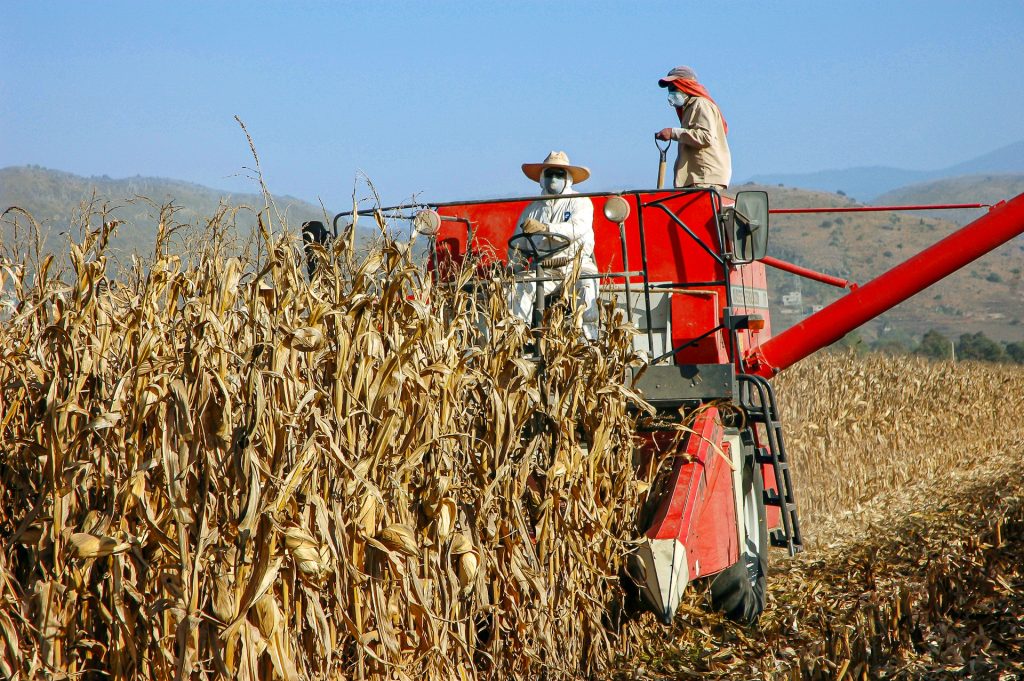
The situation in the regions each of you have mentioned is unique, but are there any global trends that you’ve noticed? And if so, can other regions learn from these localized experiences?
Krupnik: A huge part of what we do as a research and training institute is facilitate exchanges of information across continents and countries. Different types and designs of machinery that can be used in similar circumstances can be shared, as can business models supporting service providers.
Importantly, part of the concept of ‘scale-appropriate mechanization’ is also learning when and where machinery makes sense — where labor is not scarce and rural communities are highly dependent on income from labor to sustain their communities, some forms of mechanization may not be appropriate. We work to understand these dynamics and target the right machines in the right time and right places.
Van Loon: In addition to reducing pressure on available labor and alleviating drudgery, modern farm equipment tailored to the needs of smallholders can also increase competitiveness, as it allows for higher precision and efficiency.
In this sense, scale-appropriate mechanization can stimulate rural transformation incentivizing short and efficient value chains while ensuring stable food provision — aspects that have become essential to navigating the present crisis.
Has the current pandemic brought up any new perspectives in terms of how you consider labor and mechanization?
Baudron: We often look at yield and area planted in staple crops to assess the food security situation of a country during a particular year. This pandemic has shown us that we need to pay more attention to labor productivity. In many countries, policy-makers and development agents fear that mechanization will displace labor, but the dependency of staple crops on labor is a threat to food security, as we currently see in Africa and South Asia.
If the production of fruit, vegetables, cash crops, and so on will continue to depend on manual labor, it is essential in my view for critical tasks in the production of staples to be mechanized — particularly planting and harvesting. This will ensure the resilience of national food systems in the case of a future disruption similar to the COVID-19 pandemic.
Cover photo: Establishment of demo trial in Nyanga, Zimbabwe. (Photo: CIMMYT/ZRBF)
Demewoz Negera is a Research Officer with CIMMYT’s Global Maize Program, based in Ethiopia.
Charles Marangu is a Field Technician with CIMMYT’s Global Maize Program, based in Kenya.
A first outbreak of maize lethal necrosis was found in Kenya in 2011 and researchers immediately became active because they knew that timely action was needed to prevent irreparable damage. This viral disease was decimating maize fields and spreading rapidly in east Africa through contaminated insects and seeds.
Read more here: https://www.ledonnedelfood.it/lotta-ai-virus-anche-in-difesa-del-mais-e-del-nostro-cibo/
About 25 years ago, Yoseph Beyene first heard about the International Maize and Wheat Improvement Center (CIMMYT) from one of his professors, back when he was pursuing his undergraduate degree in Plant Science at Haramaya University in Ethiopia. “The professor, whom I regard as a great mentor, (…) always told me that if I ever got an opportunity to work at CIMMYT, I should not hesitate to take it up, as it was a great place to conduct maize breeding,” recollects Beyene, now a maize breeder at CIMMYT. He grew up in Alem Ketema, a village located 190 km north of Addis Ababa, Ethiopia’s capital.
In retrospect, he did not know this would change his perspective on how he viewed crops, especially maize, on smallholder farms. Like many other families in Alem Ketema, his family attended to their small farm to meet their food and nutritional needs. Most people practiced subsistence farming, intertwined with livestock keeping, on small plots that were typically less than 2 hectares. At the backyard of his family’s farm, different crops such as maize, sorghum and teff were grown. As a child, he never quite registered in his mind that farmers grew mainly recycled seed. “In hindsight, I can say that the yield of a crop such as maize was just about 1.5 tons per hectare at the time,” he reckons.
Such low yield potential meant feeding relatively large family sizes of about seven people was a tall order. It did not help that crops such as maize and wheat were frequently affected by diseases and pests and erratic rains, which diminished yields. It was not until his high school days when he had firsthand experience with high-yielding improved crop varieties. As part of the farm management class, he actively participated in the school’s farm management unit. He got to appreciate the yield variation between improved and local varieties, grown on the school plots. These improved seed, he quickly realized, were the ideal antidote to the low yield farmers obtained.
Struck by an epiphany
“This was like a eureka moment for me. When I realized that it was possible to improve and deliver desirable seed varieties that could double farmers’ yields, I decided to study plant breeding at the university. If only the farmers back in my village knew about the improved seed and adopted them at the time, it could not only have helped solve the problems of food insecurity but also bettered their livelihoods,” he ponders.
When he enrolled for a PhD in Plant Breeding and Genetics at the University of Pretoria, he did his research in highland maize in collaboration with CIMMYT in Ethiopia. Upon completion, he was appointed as a senior cotton breeder at South Africa’s Agricultural Research Council (ARC), where he worked for one and a half years.
“One day, I saw an advertisement in which CIMMYT was looking for a maize breeder. I applied, went for the interview and was happy to get the position. That was in 2008,” he says.
The right tool for the right variety
Biotic and abiotic stresses are becoming more frequent and vicious because of climate change and there is growing urgency to tackle them to avert future potential food crises.
Beyene’s current research focuses on developing high-yielding and climate-resilient maize inbred lines and hybrids for sub-Saharan Africa. He uses conventional and molecular breeding, including integration of novel tools and techniques, such as doubled haploid, and marker-assisted recurrent section and genomic selection. Over the years, he has developed at least 25 new drought-tolerant maize hybrids recommended for commercialization in Kenya, Mozambique, Uganda, South Africa and Tanzania. Currently, 23 seed companies have been engaged to produce and market the released hybrids through sub-licensing.
Presently, as the Regional Breeding Coordinator for Africa, he is responsible for assessing the progress of implementing product profile-based breeding, appropriate germplasm exchange within and across regional breeding hubs, and ascertaining the progress on new initiatives by regional breeding teams.
A long-term endeavor
Breeding is a costly, time consuming and complex exercise. “It takes at least 10 years from crossing to release using pedigree breeding because the hybrids should be evaluated in multiple years and tested in multiple locations, which increases costs and time of the breeding cycle. You have to appreciate the fact that you are not breeding for now but for the future,” he says.
“As a breeder, you have to keep testing new tools and techniques to make breeding more efficient. Yet, resources are not always constant but inadequate. Stresses are becoming more urgent and vicious, despite increased urgency in tackling them to avert a potential food crises,” he says.
To reduce the time and accelerate genetic gains, Beyene and his colleagues at CIMMYT are currently applying the genomic selection technique for maize breeding, using it to predict the performance of un-phenotyped genotypes at early stage of testing. He and his colleagues recently published their research comparing genomic selection with phenotypic selection, as used by CIMMYT’s maize breeding program in sub-Saharan Africa. They found that the use of genomic selection for yield under optimum and drought conditions in tropical maize can produce selection candidates with similar performance as those generated from conventional phenotypic selection, but at a lower cost. They concluded that this strategy should be effectively incorporated into maize breeding pipelines to enhance breeding program efficiency.
Breeding challenges notwithstanding, Beyene feels fulfilled whenever he sees a farmer has planted a variety that he helped breed. “The epitome of my inspiration is when there is a smile on their face because of the variety’s good performance on their farm,” he says.
Interacting with the farmers and seed companies provides an opportunity for him to learn, understand their varietal preferences as well as appreciate the impact that his work has on their operations. He is also actively engaged in building the capcity of public and private partners, and supervising master’s and doctoral students from various countries. He has published more than 50 articles in journals.
The life of a breeder is not as lonely and boring as some would think. Beyene creates time to be with his three children, playing with them and helping with their homework, taking them out for social events. He also dedicates time to watch football, reality television, comedy and drama with his family.
When a maize lethal necrosis (MLN) outbreak happened in Kenya in 2011, scientists knew they needed to act fast. This viral disease, new to Kenya, was decimating maize fields. Within a few years, the viral disease spread rapidly in eastern Africa, through both insect vectors and contaminated seeds. If the virus were to spread into southern or West Africa, it would spell disaster for the smallholder farmers across the continent who depended on maize as a staple crop and for their family’s income and livelihoods.
The International Maize and Wheat Improvement Center (CIMMYT) and its partners immediately took action to impose a strict seed quarantine and restrict the movement of seed between eastern Africa and other regions in Africa. In addition, they worked intensively on developing and disseminating improved maize cultivars with tolerance or resistance to MLN, undertook extensive surveillance efforts, and sensitized partners on the importance of producing and commercializing MLN-free seed.
Due to these efforts, in the last nine years MLN has not been reported in sub-Saharan Africa outside of eastern Africa.
On the occasion of a recent publication on Virus Research about how MLN was contained, we interviewed B.M. Prasanna, director of the Global Maize Program at CIMMYT and the CGIAR Research Program on Maize (MAIZE), to discuss the MLN success story, the global COVID-19 crisis, and the similarities in the challenge to tackle plant and human viral diseases.
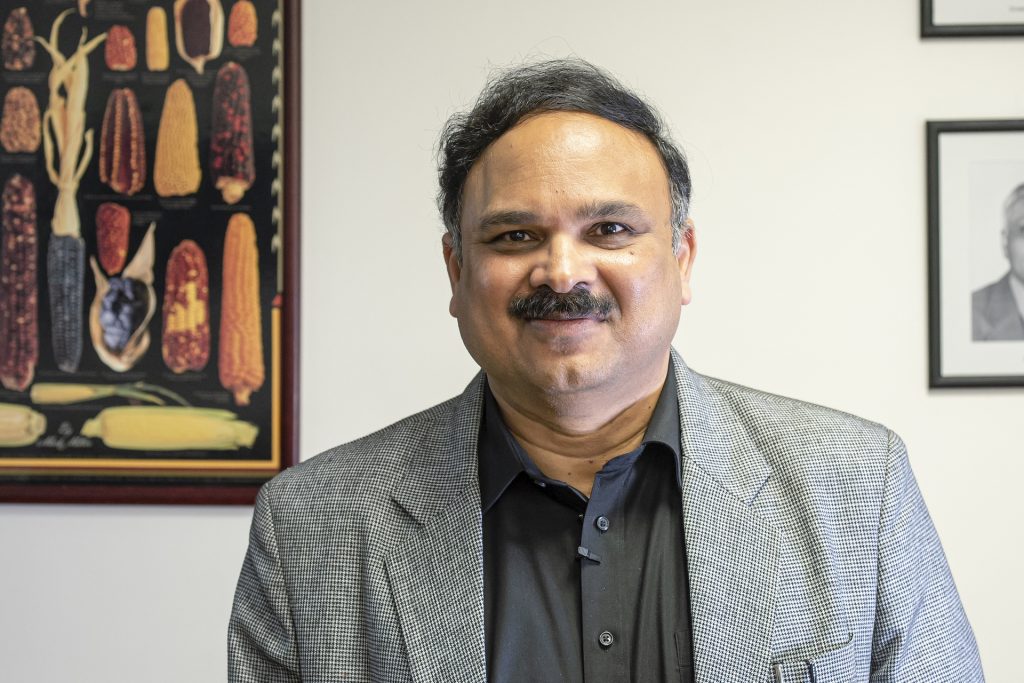
What were some of the extreme measures CIMMYT had to take to stop the spread of MLN?
The first step that we had to take in the fight against MLN was to rigorously analyze seed for any possible contamination with MLN-causing viruses and restrict movement of seed from eastern Africa to southern Africa.
The second most important step was to sensitize the national partners and the commercial seed sector about the danger of seed contamination with MLN-causing viruses, and how seed contamination can lead to the proliferation or spread of the disease.
The third important step was to build a new MLN quarantine facility in Zimbabwe, in partnership with the National Plant Quarantine Institute. Only when that quarantine facility was functional in 2017, we reinitiated transfer of research material from CIMMYT’s breeding hub in Kenya to CIMMYT in Zimbabwe. Only when the materials were certified to be MLN-free both in Kenya and Zimbabwe, through plant-by-plant analysis using immunodiagnostic kits, the seed was multiplied and further distributed to partners. So, the principle of containment and effective management is extremely important, whether it is a plant viral disease or a human viral disease.
We must note here that in terms of scale and intensity, as well as global effects and implications, any plant disease, including MLN, cannot be compared with a pandemic like COVID-19, which has affected every aspect of our lives.

How do you think the COVID-19 pandemic is going to impact our food systems?
We are indeed in a grim situation. The pandemic will undoubtedly have a serious effect on food security.
Many countries which do not have enough food reserves or those where the food systems are vulnerable to shocks like this are suffering. The people’s capacity to procure inputs for agriculture, including seed, is going to be affected too, as the markets are affected. This is really a serious situation that we all should be concerned about. The CGIAR has an important role to play, in terms of working closely with national partners and mitigating the impact of COVID-19 on agriculture.
We should be particularly worried about farmers, especially smallholder farmers, who are quite vulnerable to the ongoing challenge. Even without COVID-19, agriculture in many developing countries worldwide has been already under distress. Small and marginal farmers were often unable to find a market for their produce and earn sufficient income to support their families. Their livelihoods are fragile, and vulnerable to climate change and volatile market prices. The ongoing COVID-19 crisis is unfortunately compounding the crisis.

What lessons can agricultural research learn from this pandemic?
What do these pandemics or epidemics teach us? They remind us that systems need to be in place to prevent the proliferation of such diseases, whether it is plant diseases or animal diseases or human diseases. No country can be considered completely safe, and such diseases do not discriminate between a developed and a developing country, or the rich and the poor.
The second most important lesson is emergency preparedness. Whenever such devastating transboundary viral diseases show up, how quickly the country can respond — containing that infected area and not allowing the disease to spread, and then mitigating the damage systematically and quickly — is key. This is not the first time that a disease like MLN has emerged. There could be more serious viral or fungal diseases that could emerge in the future due to various reasons, including changing climates, international trade, movement of human beings, air currents, etc. There are multiple ways that diseases can go across continents, across countries within a continent, and within countries. Therefore, the key is how well we can capacitate the national systems to be able to proactively prevent, detect, and intervene very fast.
Another big lesson here for agricultural systems is that a problem that happens in some other continent cannot be ignored because you work in a different continent. What COVID-19 shows is that the world is far more connected than we think.
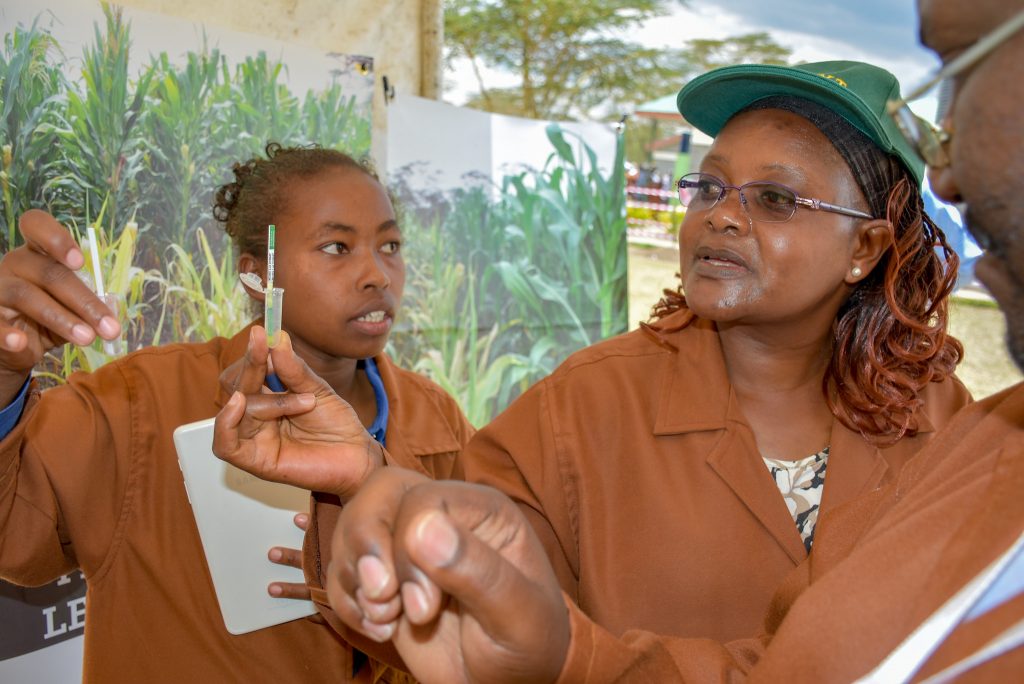
For you, what is the biggest takeaway from the MLN success story?
I won’t say it is still a complete success. Through intensive partnerships and efforts, we were able to prevent the disease from devastating maize production in millions of smallholder farmers’ fields in sub-Saharan Africa. Since 2014, there has been no new country in Africa — outside eastern Africa — that has reported an outbreak of MLN. That, to me, is a tremendous success.
The work is still not over. The journey has to continue. And we still need to make sure that countries are continuously protected from devastating diseases like MLN. MLN is still not eradicated from eastern Africa. It may not be even possible to completely eradicate this disease, as the two viruses that together cause it can survive not just on maize but on multiple grasses. We can however contain the disease and limit its impact through continued efforts, like what we have done for the past 7 or 8 years. But if we lower our guard, there is a very high likelihood that the disease can still spread to other countries in sub-Saharan Africa, especially the major maize-growing countries in southern Africa or West Africa. Efforts need to continue. So, let us continue to maintain a high vigil to protect the smallholders in Africa from transboundary diseases like MLN.
Read the full article on Virus Research:
Maize lethal necrosis (MLN): Efforts toward containing the spread and impact of a devastating transboundary disease in sub-Saharan Africa